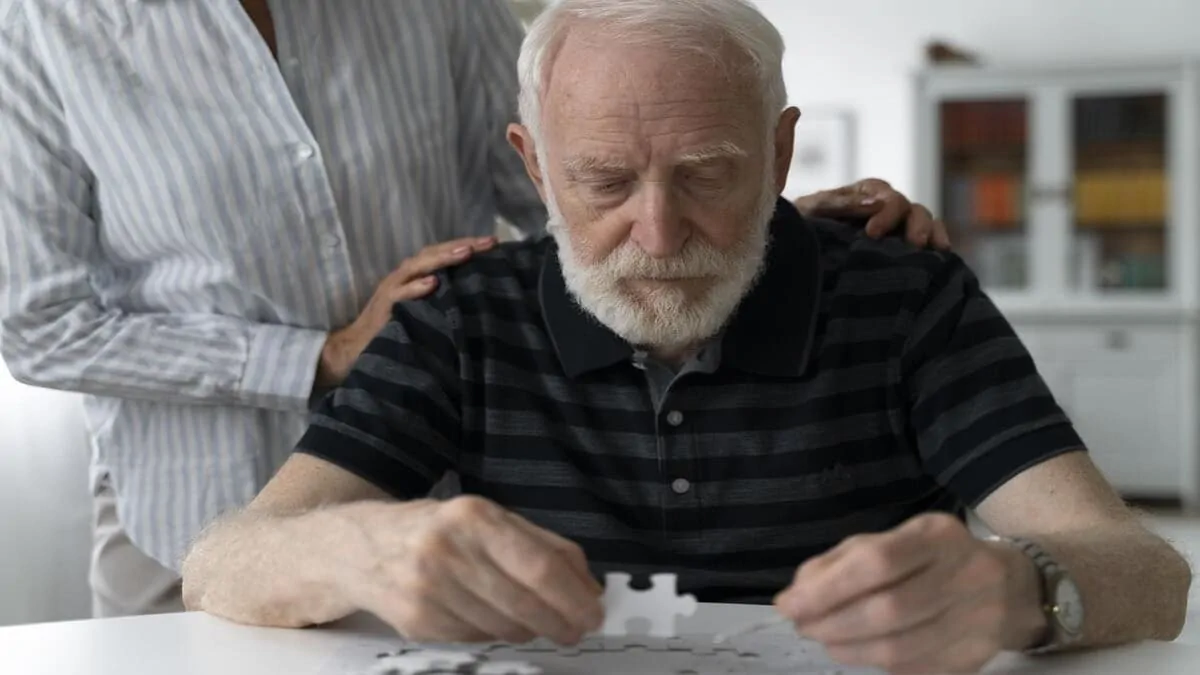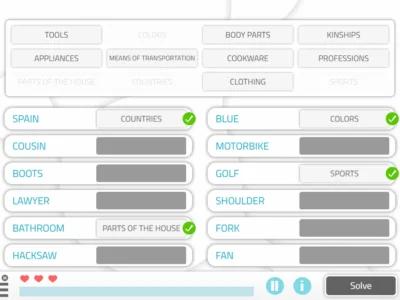Psychologist Kira Guerra Franco explains in this article the concept of addiction, focusing particularly on the substance addiction and its relationship with the brain reward circuit.
Concept of addiction
The addiction is a complex phenomenon that cannot be reduced exclusively to a brain malfunction. Following this premise would fall into one of the most frequent reductionist approaches within the biological-brain conceptualization of disorders (Elío-Calvo, 2023).
Addiction as a disease
Studies that consider addiction as a disease date back to the 19th century, remaining prominent in the 20th century, especially with research on opioid use (Becoña, 2016). In this context, funded studies by governments or interested entities often sought a biological explanation for addiction to position it as a medical disorder rather than as a social or moral problem.
This biological approach has had, and continues to have, a notable influence on how individual responsibility is conceived in the face of addictive behavior (Becoña, 2016). By focusing on neurochemical and brain aspects, this paradigm tends to minimize the individual’s capacity for decision-making, resulting in a form of exculpation.
Within this framework, it is proposed that the loss of control over substance use may lie beyond the reach of conscious will. Consequently, the idea is reinforced that a person with an addiction, considered as mentally ill, intrinsically lacks self-control (Becoña, 2016; Vrecko, 2010).
In its most radical version, this perspective relegates the individual’s responsibility in relation to the harm inflicted on third parties to a secondary role, thereby generating ethical and legal controversies that have been the subject of discussion (Gómez, 1995).
This model has been criticized by many experts who consider that addiction cannot be explained exclusively by biology, since it is a phenomenon that involves social, cultural, psychological, and personal factors (Becoña, 2016, 2018).
Likewise, conceiving addiction as a mental illness would position us within a social structure that tends to classify and group human characteristics into rigid categories or “boxes,” each associated with specific stigmas and narratives. These classifications, often dichotomous, such as health-illness or normality-abnormality, simplify the inherent diversity of human experiences, ignoring that these concepts are, in reality, part of a dynamic continuum.
Health and illness are not opposite and fixed poles, but states that can change gradually depending on various biopsychosocial factors (Godoy, 1999).
The concept of addiction has been historically debated and, although the biomedical model has gained ground in the interpretation of this phenomenon, it remains important to recognize the complexity underlying its emergence and development (Becoña, 2016).

Subscribe
to our
Newsletter
Motivated adaptive behavior
Human beings, by nature, have adaptive behavior. This means that, through motivation, they seek to satisfy needs of different hierarchies, which can be illustrated by Maslow’s hierarchy of needs.
According to Maslow (1943), the most basic needs, such as survival, must be satisfied first before a person seeks to fulfill higher needs, such as self-actualization. This hierarchy of needs can directly influence addictive behaviors, where substances or activities become tools to satisfy immediate physiological or emotional needs, leaving aside other long-term needs.
Motivated adaptive behavior implies direction toward a goal and activation of the organism through environmental or interoceptive stimuli, which has been widely described by Miranda (2006). In this sense, Kalivas and Volkow (2005) suggest that the search for the neurobiological basis of motivated behavior focuses on identifying the brain substrates that assign salience to stimuli, facilitating a specific behavioral response to them and triggering adaptive or impulsive responses.
Regarding the brain regions involved in the activation of motivated behaviors, Miranda (2006) highlights three key areas:
- the amygdala,
- the nucleus accumbens
- and the prefrontal cortex.
These regions play a crucial role in reward processing and behavioral decision-making.
The reward circuit
The brain reward system is a set of brain structures that activate in response to received stimuli, releasing neurotransmitters that generate sensations of pleasure and motivation. This system plays an essential role in regulating adaptive behaviors and in habit formation, since it facilitates learning and maintenance of behaviors such as feeding or reproduction (Méndez-Díaz et al., 2017).
Its link to substance use lies in the organism’s ability to learn and reinforce behaviors associated with use, storing in memory stimuli that can later act as triggers for repetition (Hernández, Serrano, & Jacinto, 2018).
The main structures involved in the reward system include (Hernández, Serrano, & Jacinto, 2018):
1. The limbic system
Known as the “emotional brain”, it is involved in the regulation of emotions, motivational processes and learning. It includes structures such as the amygdala and the hippocampus, which have great relevance in memory formation and emotional response.
2. The ventral tegmental area (VTA)
Located in the midbrain, it is a major source of dopaminergic neurons that project to various brain regions, including the nucleus accumbens and the prefrontal cortex. Dopamine released by the ventral tegmental area (VTA) contributes to the sensation of pleasure and motivation.
3. The nucleus accumbens (NAc)
Part of the basal ganglia, it acts as an interface between motivation and motor action. In addition, it is largely responsible for receiving afferents from the ventral tegmental area (VTA) and plays an essential role in habit formation and in the response to reinforcing stimuli, being a substantial structure in the development of addictions.
This last structure, the nucleus accumbens (NAc), is divided into two areas: the shell and the core:
- The shell region receives dopaminergic signals from the ventral tegmental area (VTA), which regulate the motivational salience attributed to stimuli and facilitate the formation of associations between environmental stimuli and motivating experiences.
- On the other hand, the core region establishes connections with the anterior cingulate and the orbitofrontal cortex, areas involved in reward evaluation, decision-making and behavior modulation. This process is carried out through glutamatergic projections, necessary for learning and adaptation to new situations (Kelley, 2004).
Approach and conclusion
In conclusion, while it is essential to recognize the role that the biological level plays in addictions, it should not be considered the only explanatory pillar nor the exclusive core on which these phenomena are based.
Along the same lines, the approach to addictions must transcend reductionist perspectives that tend to classify people exclusively under diagnostic labels. As García Patiño (2022) emphasizes, “a person is not their addiction.” This approach urges adopting a perspective that considers the person as an active subject and not as a passive object of treatment. Therapeutic relationships should prioritize understanding, respect and the co-construction of solutions, leaving behind vertical and pathologizing paradigms that perpetuate stigma and the lack of agency.
Likewise, it is crucial to recognize that the medical model, frequently used in this field, can be instrumentalized by economic interests, such as those of the pharmaceutical industry. Cosgrove and Krimsky (2012) evidenced conflicts of interest in the development of the DSM-5, highlighting how the commodification of diagnoses can influence the conceptualization of disorders and diseases, especially in a field like psychiatry, which depends on subjective judgments and lacks clear biological markers (Becoña, 2016).
Bibliography
- Becoña, E. (2016). Addiction “is not” a brain disease. Papeles del Psicólogo / Psychologist Papers, 37(2), 118-125. https://www.redalyc.org/pdf/778/77846055004.pdf
- Becoña, E. (2018). Behavioral addictions: separating the wheat from the chaff. INFONOVA, Revista profesional y académica sobre adicciones, 34, 11-21. https://www.researchgate.net/publication/325989445
- Cosgrove, L., & Krimsky, S. (2012). A comparison of DSM-IV and DSM-5 panel members’ financial associations with industry: a pernicious problem persists. PLoS medicine, 9(3), e1001190. https://doi.org/10.1371/journal.pmed.1001190
- Elío-Calvo, D. (2023). Los modelos biomédico y biopsicosocial en medicina [Biomedical and biopsychosocial models in medicine]. Revista Médica La Paz, 29(2). http://www.scielo.org.bo/scielo.php?script=sci_arttext&pid=S1726-89582023000200112
- García Patiño, A. (2022). Transcending addiction. A person is not their addiction. Revista Española de Drogodependencias, 47(1), 11-21. https://doi.org/10.54108/10001
- Godoy, J. (1999). Health psychology: Conceptual delimitation. In M. A. Simón (Ed.), Manual de psicología de la salud: Estilos de vida y promoción de la salud. Material didáctico: Fundamentos, metodología y aplicaciones (pp. 39–75). Biblioteca Nueva.
- Gómez, A. P. (1995). Addiction and disease: myth and reality. Revista Colombiana de Psicología, (4), 67–71.
- Hernández, K. C. R., Serrano, L. M. R., & Jacinto, U. L. (2018). Neurobiology of the reward system in addictive behaviors: alcohol consumption. Revista electrónica de psicología Iztacala, 20(4). https://www.revistas.unam.mx/index.php/repi/article/view/62805
- Kalivas, P. W., & Volkow, N. (2005). The neural basis of addiction: A pathology of motivation and choice. American Journal of Psychiatry, 162(8), 1403–1413. https://doi.org/10.1176/appi.ajp.162.8.1403
- Kelley, A. E. (2004). Ventral striatal control of appetitive motivation: Role in ingestive behaviour and reward-related learning. Neuroscience and Biobehavioral Review, 27(8), 765–776. https://doi.org/10.1016/j.neubiorev.2003.11.015
- Kuhar, M., Droby, L. C., Evans, J. A. F., & Caselli, K. G. (2016). The addicted brain: Why we abuse drugs, alcohol, nicotine and many other things. Ediciones UC.
- Maslow, A. H. (1943). A theory of human motivation. Psychological Review, 50(4), 370–396. https://doi.org/10.1037/h0054346
- Miranda, A. V. (2006). Neurobiology of addictions: Beyond the reward circuit. Revista de Psiquiatría y Salud Mental Hermilio Valdizán, 7(2), 73-80.
- Méndez-Díaz, M., Romero Torres, B. M., Cortés Morelos, J., Ruíz-Contreras, A. E., & Prospéro García, O. (2017). Neurobiology of addictions. Revista de la Facultad de Medicina (México), 60(1), 29-38. https://doi.org/10.22201/fm.24484865e.2017.60.1.03
- Vrecko, S. (2010). Birth of a brain disease: Science, the state and addiction neuropolitics. History of the Human Sciences, 23(4), 52–67. https://doi.org/10.1177/0952695110371598
If you liked this blog post about the concept of addiction and the brain reward system, you will probably be interested in these NeuronUP articles:
“This article has been translated. Link to the original article in Spanish:”
El concepto de adicción y el sistema de recompensa cerebral







Leave a Reply